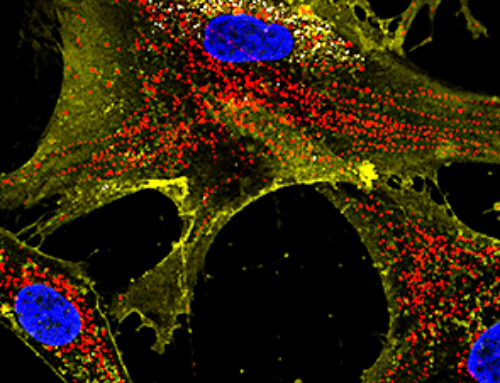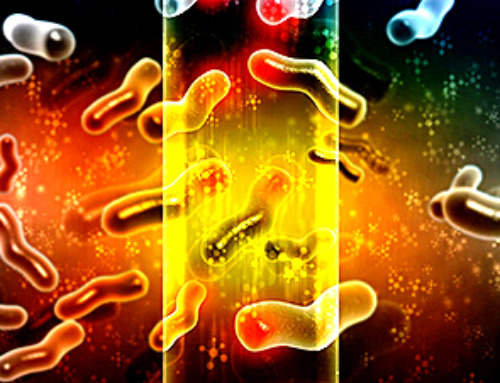A new report calls for global action on plastic pollution, urging reductions in plastic production and microplastic emissions. Researchers stress the importance of addressing plastic pollution through both scientific and social science perspectives.
A new report states that science has provided ample evidence to support a unified global strategy to address the ongoing issue of plastic pollution.
Writing in the journal Science, an international group of experts says the need for worldwide action to tackle all forms of plastic and microplastic debris has never been more pressing.
It is clear that existing national legislation alone is insufficient to address the challenge, they say, and the United Nations' Plastic Pollution Treaty – which will undergo its fifth round of deliberations in November 2024 – presents a "tangible opportunity" for joined-up international action.
The Need for Reducing Plastic Production
However, for such a treaty to be truly effective it needs to commit to an overall reduction in plastic production alongside measures to reduce the emission and release of microplastic particles along the entire plastic life cycle. Failing to do so, the researchers add, could bring "a high risk of irreversible environmental damage".
The article was written to mark the 20th anniversary of the first-ever study, also published in the journal Science, to coin the term microplastics to describe the microscopic fragments of plastics in our ocean.
Both studies were led by Professor Richard Thompson OBE FRS, Head of the International Marine Litter Research Unit at the University of Plymouth, and a co-coordinator of the Scientists Coalition for an Effective Plastics Treaty.
It was co-authored by experts in marine biology, sustainability, environmental psychology, global plastics policy, and risk assessment, from the University of Plymouth, University of Bangor (UK); EA – Earth Action (Switzerland); University of Vienna (Austria); University of Wollongong (Australia); and Wageningen University (Netherlands).
Professor Thompson said: "After 20 years of research there is clear evidence of harmful effects from microplastic pollution on a global scale. That includes physical harm to wildlife, harm to societies and cultures, and a growing evidence base of harm to humans. Added to that is the fact that microplastics are persistent contaminants, and once in the environment, they are virtually impossible to remove. There are still unknowns, but during the 20 years since our first study the amount of plastic in our oceans has increased by around 50%, only further emphasizing the pressing need for action."
A Growing Body of Evidence and Global Impact
Since the publication of the first study in 2004, an estimated 7,000 research studies have been conducted on microplastics, providing considerable evidence in their sources and impacts as well as potential solutions.
Microplastics have been found on every corner of the planet, in more than 1,300 aquatic and terrestrial species, in the food and drink we consume, and in multiple tissues and organs of the human body.
With emissions of microplastics to the environment estimated to be up to 40 megatonnes per year, a number that could double by 2040, predictions indicate the potential for widescale environmental harm moving into the next century.
Professor Sabine Pahl, Professor of Urban and Environmental Psychology at the University of Vienna and Honorary Professor at the University of Plymouth, added: "Plastic pollution is completely caused by human actions. That's why we need research on perceptions of risks and benefits of plastic as well as other drivers of policy support and change, integrating a social science perspective."
Reference: "Twenty years of microplastics pollution research—what have we learned?" by Richard C. Thompson, Winnie Courtene-Jones, Julien Boucher, Sabine Pahl, Karen Raubenheimer and Albert A. Koelmans, 19 September 2024, Science.
DOI: 10.1126/science.adl2746
News
Novel mRNA therapy curbs antibiotic-resistant infections in preclinical lung models
Researchers at the Icahn School of Medicine at Mount Sinai and collaborators have reported early success with a novel mRNA-based therapy designed to combat antibiotic-resistant bacteria. The findings, published in Nature Biotechnology, show that in [...]
New skin-permeable polymer delivers insulin without needles
A breakthrough zwitterionic polymer slips through the skin’s toughest barriers, carrying insulin deep into tissue and normalizing blood sugar, offering patients a painless alternative to daily injections. A recent study published in the journal Nature examines [...]
Multifunctional Nanogels: A Breakthrough in Antibacterial Strategies
Antibiotic resistance is a growing concern - from human health to crop survival. A new study successfully uses nanogels to target and almost entirely inhibit the bacteria P. Aeruginosa. Recently published in Angewandte Chemie, the study [...]
Nanoflowers rejuvenate old and damaged human cells by replacing their mitochondria
Biomedical researchers at Texas A&M University may have discovered a way to stop or even reverse the decline of cellular energy production—a finding that could have revolutionary effects across medicine. Dr. Akhilesh K. Gaharwar [...]
The Stunning New Push to Protect the Invisible 99% of Life
Scientists worldwide have joined forces to build the first-ever roadmap for conserving Earth’s vast invisible majority—microbes. Their new IUCN Specialist Group reframes conservation by elevating microbial life to the same urgency as plants and [...]
Scientists Find a Way to Help the Brain Clear Alzheimer’s Plaques Naturally
Scientists have discovered that the brain may have a built-in way to fight Alzheimer’s. By activating a protein called Sox9, researchers were able to switch on star-shaped brain cells known as astrocytes and turn them into [...]
Vision can be rebooted in adults with amblyopia, study suggests
Temporarily anesthetizing the retina briefly reverts the activity of the visual system to that observed in early development and enables growth of responses to the amblyopic eye, new research shows. In the common vision [...]
Ultrasound-activated Nanoparticles Kill Liver Cancer and Activate Immune System
A new ultrasound-guided nanotherapy wipes out liver tumors while training the immune system to keep them from coming back. The study, published in Nano Today, introduces a biodegradable nanoparticle system that combines sonodynamic therapy and cell [...]
Magnetic nanoparticles that successfully navigate complex blood vessels may be ready for clinical trials
Every year, 12 million people worldwide suffer a stroke; many die or are permanently impaired. Currently, drugs are administered to dissolve the thrombus that blocks the blood vessel. These drugs spread throughout the entire [...]
Reviving Exhausted T Cells Sparks Powerful Cancer Tumor Elimination
Scientists have discovered how tumors secretly drain the energy from T cells—the immune system’s main cancer fighters—and how blocking that process can bring them back to life. The team found that cancer cells use [...]
Very low LDL-cholesterol correlates to fewer heart problems after stroke
Brigham and Women's Hospital's TIMI Study Group reports that in patients with prior ischemic stroke, very low achieved LDL-cholesterol correlated with fewer major adverse cardiovascular events and fewer recurrent strokes, without an apparent increase [...]
“Great Unified Microscope” Reveals Hidden Micro and Nano Worlds Inside Living Cells
University of Tokyo researchers have created a powerful new microscope that captures both forward- and back-scattered light at once, letting scientists see everything from large cell structures to tiny nanoscale particles in a single shot. Researchers [...]
Breakthrough Alzheimer’s Drug Has a Hidden Problem
Researchers in Japan found that although the Alzheimer’s drug lecanemab successfully removes amyloid plaques from the brain, it does not restore the brain’s waste-clearing system within the first few months of treatment. The study suggests that [...]
Concerning New Research Reveals Colon Cancer Is Skyrocketing in Adults Under 50
Colorectal cancer is striking younger adults at alarming rates, driven by lifestyle and genetic factors. Colorectal cancer (CRC) develops when abnormal cells grow uncontrollably in the colon or rectum, forming tumors that can eventually [...]
Scientists Discover a Natural, Non-Addictive Way To Block Pain That Could Replace Opioids
Scientists have discovered that the body can naturally dull pain through its own localized “benzodiazepine-like” peptides. A groundbreaking study led by a University of Leeds scientist has unveiled new insights into how the body manages pain, [...]
GLP-1 Drugs Like Ozempic Work, but New Research Reveals a Major Catch
Three new Cochrane reviews find evidence that GLP-1 drugs lead to clinically meaningful weight loss, though industry-funded studies raise concerns. Three new reviews from Cochrane have found that GLP-1 medications can lead to significant [...]





















